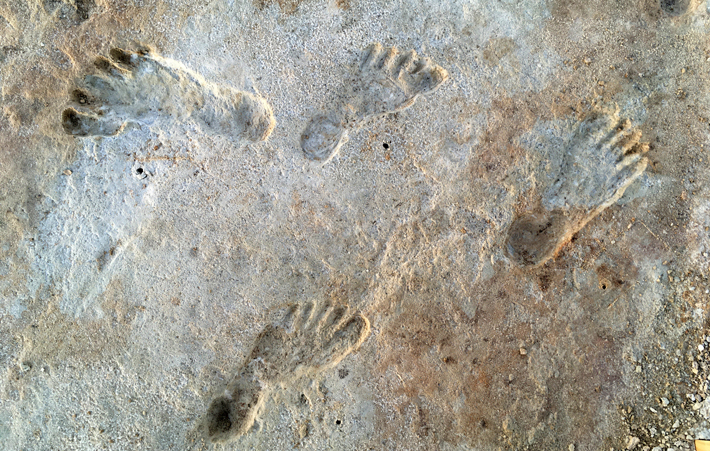 Human footprints found in New Mexico’s White Sands National Park date back 23,000 years, according to a statement released by the University of Arizona .
Human footprints found in New Mexico’s White Sands National Park date back 23,000 years, according to a statement released by the University of Arizona .
Jeff Pigati and Kathleen Springer of the US Geological Survey radiocarbon dated seeds found on and under multiple layers of footprints left in stream beds at White Sands National Park over a 2,000-year period.
The size of the footprints suggest they were made mainly by teenagers and younger children playing, but an adult has occasionally visited the stream, said Matthew Bennett of Bournemouth University.
Migrants were previously thought to wait to enter North America until melting ice sheets open up overland migration routes, but these new dates for the site’s oldest tracks show that people had arrived in North America during the last glacial maximum.
The footprints of mammoths, giant sloths, and other extinct animals have also been found, indicating that they shared the landscape with humans.










